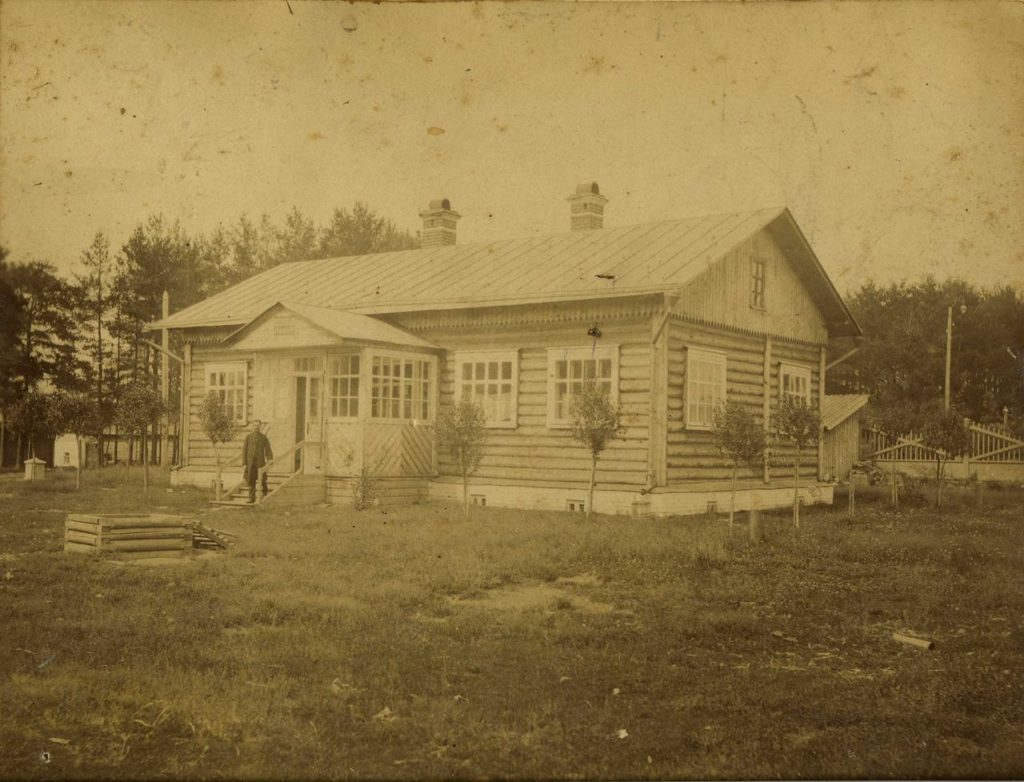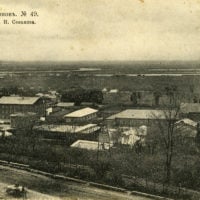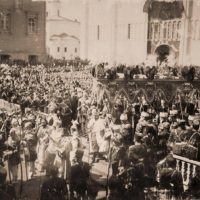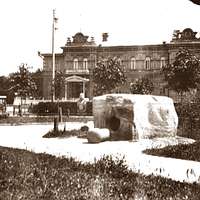
Related

Factory of merchants Solovyovs - Kirzhach, Russia

House of merchants and industrialists Nedykhlyaev, Kirzhach, Russia

Kirzhach - View of the factory of merchants Solovyov

Kirghiz tent in the Nogai steppes near Astrakhan. 1894, South Russia city on Volga River

N.A.Naidenov (1883) V1.13. Pokrov-na-Rvu crop

Factory of the partnership of Senkova - Vyazniki of Vladimir Gubernia

Kaunas (Kovno) Province, Russian empire, 1856

Moscow Kremlin. Coronation of Emperor Nicholas II and Empress Alexandra Feodorovna, 1896

Ekaterinodar (Krasnodar), Russia 1890-1910
Receiving rest and maternity ward at the factory of merchants and industrialists Nedykhlyaev. 1899 - Kirzhach, Russia
Summary
Receiving rest and maternity ward at the factory of merchants and industrialists Nedykhlyaev. 1899
In the XIX century, the life of the city was animated by the large trade road that ran through it - Stromynka, which connected Moscow with the textile edge. After the abolition of serfdom, industry developed. In 1896 in the city there were 8 silk-weaving factories and a factory of copper and bronze products. Merchant entrepreneurs Peter and Alexander Solovyov built a teacher's seminary, a women's school, the All Saints Church.
Приемный покой и родильное отделение на фабрике купцов и промышленников Недыхляевых. 1899
В XIX веке жизнь города оживляла проходившая через него большая торговая дорога — Стромынка, связывавшая Москву с текстильным краем. После отмены крепостного права получила развитие промышленность. В 1896 году в городе имелось 8 шёлкоткацких фабрик и фабрика медных и бронзовых изделий. Купцы-предприниматели Пётр и Александр Соловьёвы построили учительскую семинарию, женское училище, Всехсвятскую церковь.
Kirzhach first mentioned in 1332 in the spiritual letter of Ivan Kalita as a settlement with the St. Sergius of Radonezh Annunciation founded in 1358, the blossoming period of which falls on the XV-XVIII century. In the XIX century, the life of the city was supported by the large trade road that ran through it - Stromynka, which connected Moscow with the textile edge. After the abolition of serfdom, industry developed. In 1896 in the city there were 8 silk-weaving factories and a factory of copper and bronze products. Merchant entrepreneurs Peter and Alexander Solovyov built a teacher's seminary, a women's school, the All Saints Church. Киржач впервые упоминается в 1332 году в духовной грамоте Ивана Калиты как слобода при основанном в 1358 году Сергием Радонежским Благовещенском монастыре, период расцвета которого приходится на XV—XVIII века. В XIX веке жизнь города оживляла проходившая через него большая торговая дорога — Стромынка, связывавшая Москву с текстильным краем. После отмены крепостного права получила развитие промышленность. В 1896 году в городе имелось 8 шёлкоткацких фабрик и фабрика медных и бронзовых изделий. Купцы-предприниматели Пётр и Александр Соловьёвы построили учительскую семинарию, женское училище, Всехсвятскую церковь.
